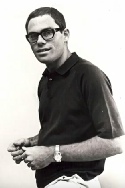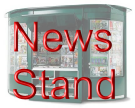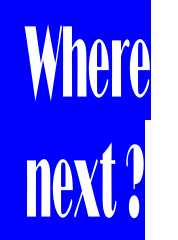© 2014-


Radio Hauraki - History (2)
These seemingly definite and advanced plans for Radio Hauraki came as a bomb shell to two ex-
shell to two ex-
However, despite all their efforts and meticulous planning the four men still could not convince any large company to back the offshore radio station project financially. All the large companies in the tobacco sector had shown considerable initial interest, but despite raising false hopes time after time they had subsequently refused to put up any backing money.
Attention then turned to other large industrial organisations and amongst these was New Zealand's then only independent national oil company, Europa Oil. Much to the surprise of David Gapes and his colleagues Europa Oil executives agreed to fund the proposal and Radio Hauraki was at last able to move forward with its plans.
There were some conditions attached to the financial deal -
The station moved to larger premises at Colebrook's Building in Anzac Avenue, Auckland where two studios were constructed, together with administrative and advertising sales offices. Obtaining professional quality technical equipment for the studios, and in particular parts to build a transmitter proved very difficult because of New Zealand's import restrictions on goods of that nature. Eventually an old US Navy wartime transmitter was acquired from a radio amateur and secretly moved to the basement of the station's offices where it was stripped and re-
Anticipated capital costs for putting Radio Hauraki on the air were high and even with the money from Europa Oil the financial situation was still critical so plans were implemented in July 1966 to try and secure some definite promises of advertising revenue. David Gapes and Derek Lowe visited every Auckland advertising agency, talked about the station's plans and played a demonstration tape to scores of account executives. The result was promising and many advertising contracts were secured, mainly from local Auckland-
In order to further ease the project's financial difficulties Jim Frankham devised a deal whereby the station could charter the Hokianga for six months from August 1966, at a deferred token rental payable the following February. After that date, by which time the station planned to be on the air and earning substantial advertising revenue, the monthly rental was to be revised.
Some unexpected and unwelcome developments struck the Radio Hauraki team in July 1966, which indicated that they were not alone in planning an offshore radio station. A mysterious advert appeared in the Auckland Star inviting potential staff and advertisers to write to a proposed offshore station – Radio Maverick -
Serious doubts remained within Radio Hauraki about the true viability of the Radio Ventura scheme, but news of yet more potential offshore competitors soon began to reach them. A group in Wellington (South Island) planned to anchor a ship in the Cook Straits, serving both the North and South Islands.
Yet another potential rival came to light at the end of July 1966. A newspaper headline announced "PIRATE RADIO BATTLE: TWO NEW STATIONS IN FIGHT FOR AIRWAVE FORTUNE". The person behind this second project, Radio Southern Cross, was Keith Ashton who had left the Radio Hauraki team following disagreements over policy. He claimed Radio Southern Cross would start its transmissions on 24th October 1966, with 24 hour a day programming.


Click on picture to enlarge

History
Key Dates
Ships and Location
Technical
Staff
Programmes









Treasure Chest

Chris Parkinson

Back to Radio Hauraki

Back to New Zealand Gallery



